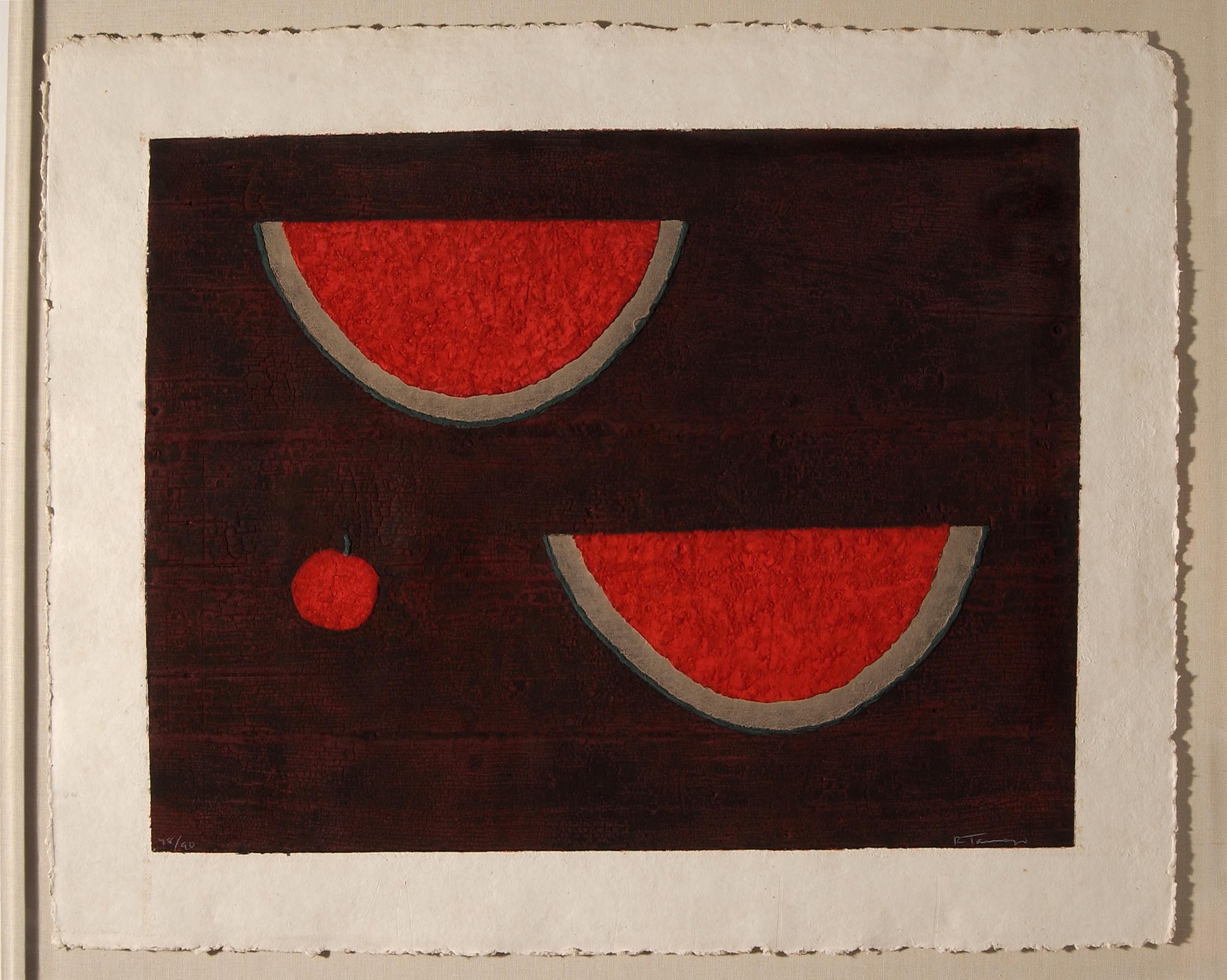Mixography is a unique printing process invented by Luis Remba, a Mexican printer who worked regularly with Rufino Tamayo in Mexico City, in response to the artist's frustration with other printing methods. In mixography, a sequence of plates, three being the minimum number, are moulded one from the another, with the last, even-numbered plate being used to print the image on paper. In the case of Watermelons with an Apple (1985) a plastic mould was made from the original collage, registering the textures in the finest detail. From the plastic a wax plate was made, the image appearing in positive form. Then a copper plate was made, taking a very precise impression of the wax. The copper plate which registers high relief, low relief and flat images, has thereby the capacity to apparently mix, or combine, all the materials in the original collage.


